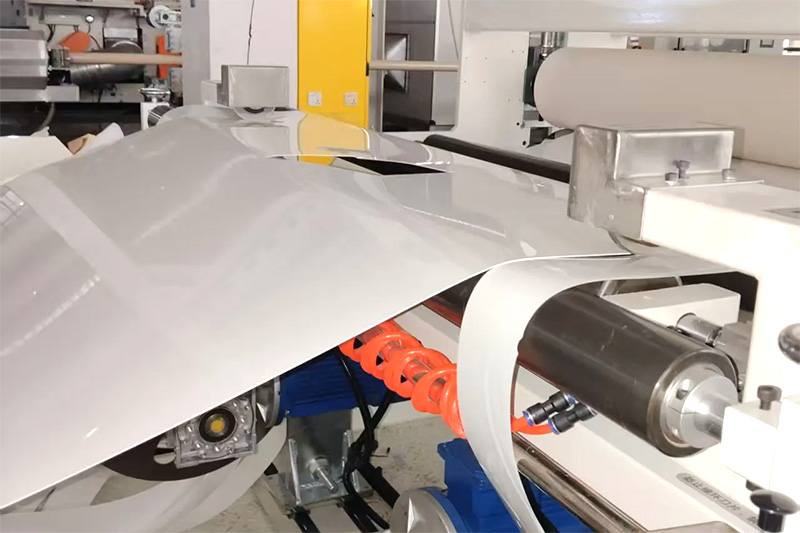The production of high-quality plastic sheets is a cornerstone of modern manufacturing, serving industries from automotive and construction to signage and consumer goods. While many polymers can be transformed into sheets, few are as ubiquitous and demanding as Poly(methyl methacrylate) – better known as Acrylic or PMMA – and Acrylonitrile Butadiene Styrene (ABS). The heart of this transformation process is the plastic sheet extruder. However, a generic extruder falls short of achieving the optical clarity, surface finish, and mechanical integrity required for these materials. A sheet extruder specifically engineered for PMMA and ABS represents a pinnacle of precision manufacturing, where a deep understanding of polymer science is translated into mechanical excellence.
Understanding the Materials: Why Tailoring is Essential
The fundamental reason for a specialized extruder lies in the distinct rheological and thermal behaviors of PMMA and ABS.
PMMA (Acrylic) is prized for its brilliant clarity, exceptional weatherability, and high UV resistance. However, it is notoriously hygroscopic, meaning it absorbs moisture from the atmosphere with great affinity. If processed with even trace amounts of moisture, it undergoes hydrolysis, leading to molecular weight degradation. This manifests as splay marks, bubbles, and a severe loss of clarity and mechanical strength—catastrophic failures for a material chosen primarily for its optics. Furthermore, PMMA has a relatively high melting point and is sensitive to thermal degradation. Overheating or prolonged residence time in the barrel can cause yellowing, destroying its water-clear appearance.
ABS is a tough, impact-resistant, and versatile terpolymer. Its strength comes from a two-phase system: a styrene-acrylonitrile (SAN) continuous phase and a dispersed polybutadiene rubber phase. This structure makes it less hygroscopic than PMMA but still moisture-sensitive enough to require drying. The primary challenge with ABS is its tendency to degrade if overheated, losing its toughness and impact resistance. It can also be prone to plate-out, where additives or low-molecular-weight components accumulate on die lips and polishing rolls, leading to surface defects on the sheet.
A one-size-fits-all extruder cannot adequately address these contrasting yet equally critical requirements. A tailored system is built from the ground up to manage these specific characteristics.
Key Components of a Tailored PMMA/ABS Sheet Extrusion Line
A specialized extrusion line is a symphony of integrated components, each playing a vital role.

1. The Drying System: The First Line of Defense
Before pellets even enter the extruder, they must be meticulously dried. A dedicated system features high-capacity, desiccant-bed hopper dryers. For PMMA, this is non-negotiable, typically requiring dew points below -40°F (-40°C) and drying temperatures around 80-90°C (176-194°F) for several hours. While ABS is less demanding, proper drying is still essential to prevent surface voids and ensure optimal melt strength. A tailored line often includes closed-loop loading systems to prevent reabsorption of moisture after drying.
2. The Extruder Itself: Heart of the Process
The extruder for PMMA and ABS is typically a single-screw design with a high length-to-diameter (L/D) ratio, often 30:1 or greater. This long barrel allows for a gradual, gentle, and precise temperature profile, which is crucial for melting these heat-sensitive materials without causing degradation.
The Screw Design: This is where specialization is most critical. The screw must be designed for homogeneous melting and mixing without generating excessive shear heat.
For PMMA, a screw with a gradual compression zone is used to gently melt the material without trapping air. It often includes mixing sections to ensure a perfectly homogeneous melt for supreme clarity.
For ABS, the screw design focuses on maintaining the integrity of the rubber particles. High-shear mixing elements are avoided as they can break down the polybutadiene phase, reducing the material's key property: impact strength.
Barrel Temperature Zones: Precise and responsive temperature control across all barrel zones is paramount. For PMMA, profiles are set to avoid hot spots, while ABS requires a profile that ensures complete melting of the SAN phase without degrading the rubber.
3. The Filtration and Gear Pump System
Melt filtration is essential for removing any contaminants that could cause defects in the final sheet. For optical-grade PMMA, this is especially critical. An automatic screen changer ensures continuous operation without pressure interruptions. Following the screen changer, a precision gear pump is often employed. This pump decouples the melting function of the screw from the pumping function, delivering a constant, pulse-free melt pressure to the die—a prerequisite for a sheet with consistent thickness and optical quality.
4. The Sheet Die and Polishing Stack: Where the Sheet Takes Form
The die is a coat-hanger type, meticulously designed to distribute the polymer melt into a uniform sheet across the entire width. For a tailored system, the die features flexible lips that can be adjusted with thermal or manual bolts for micro-adjustments to thickness profile.
For PMMA, the rolls are highly polished to a mirror finish to impart the desired surface gloss and optical clarity. The temperature of each roll is precisely controlled. A critical step is often to press the melt against the first roll (the "pinch roll") to create a flawless surface replica and eliminate any surface imperfections.
For ABS, the stack operates similarly but is calibrated to achieve the desired surface texture, which could be high-gloss or a specific matte finish.

